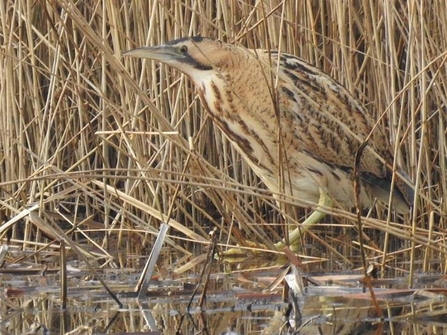New Year’s Day got off to a fine start with a total of 81 bird species recorded by several observers in the area on the day.
Winter 2020/2021 is proving to be much colder than winters of late with multiple days experiencing sub-zero temperatures. Due to the cold weather it was nice to see a good spread of typical wintering migrants such as redwing and fieldfare flocks throughout (very few present in winter 2019/2020), numerous short-eared owls on National Trust Sandilands (former golf course) on a daily basis (up to four birds present; no wintering birds in 2019/2020) and pink-footed geese and whooper swans in varying numbers. Scrutiny of a pink-footed goose flock near Huttoft Pit on New Year’s Day revealed the presence of a bean goose and three white-fronted geese. Water rails were prolific with sightings from the majority of coastal sites within the Coastal Country Park.


